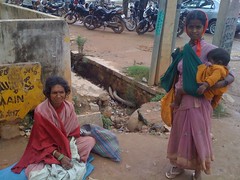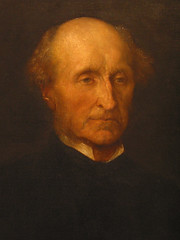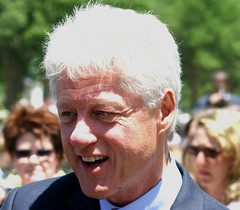Ch. 20 AP Microeconomics (Income Inequality and Poverty)
0.0(0)
Card Sorting
1/29
Earn XP
Description and Tags
Study Analytics
Name | Mastery | Learn | Test | Matching | Spaced |
|---|
No study sessions yet.
30 Terms
1
New cards
Poverty
The condition of lacking an adequate amount of money, belongings, and/or means of financial support. Is correlated with race. age, and family composition.

2
New cards
Poverty Rate
Percentage of people whose income falls below the poverty line, measures distribution of income. All time low achieved in 1973, however has increased or remained near the same level since then which is related to income inequality.

3
New cards
Income inequality
The existence of disproportionate distribution of total national income among households whereby the share going to rich persons in a country is far greater than that going to poorer persons. From 1930 to 1970 the gap between the rich and poor closed, but from the 1980's to 2000's this trend has reversed itself in the U.S.

4
New cards
John Stuart Mill
English philosopher and economist remembered for his interpretations of empiricism and utilitarianism (1806-1873) Benthamite, wrote "On Liberty". Advocated right of workers to organize, equality for women, and universal suffrage

5
New cards
Poverty line
An absolute level of income set by the federal government for each family size below which a family is deemed to be in poverty, roughly 3 times the cost level of proving an adequate diet.
6
New cards
in kind transfers
Transfers to the poor given in the form of goods and services rather than cash, one of the problems that result when measuring inequality or poverty.
7
New cards
Life Cycle
The regular pattern of income variation over a person's life. A persons income generally is low when young, then increases until about 50 and drops off after retirement at age 65. Another problem when measuring poverty and income inequality especially when compared to true living standards.
8
New cards
Permanent income
A person normal (average) income. Differs from transitory income which depends on outside conditions.
9
New cards
utility
A measure of happiness or satisfaction

10
New cards
Transitory income
the unexpected gain or loss of income that a person experiences. It is the difference between a person's regular(permanent) and actual income in any year.
11
New cards
economic mobility
The degree of upward mobility in a society; refers to the economic fortunes of different groups often measured by the percent of income each group makes. Is really apparent in the U.S as only 1/5 millionaires actually inherited their income.
12
New cards
Utilitarianism
The theory, proposed by Jeremy Bentham in the late 1700s, that government actions are useful only if they promote the greatest good (utility) for the greatest number of people.
13
New cards
liberalism
The political philosophy according to which the government should choose policies deemed just, as evaluated by an impartial observer behind "a veil of ignorance" Started by Philosopher John Rawls. Based on idea that we should maximize the minimum.
14
New cards
Jeremy Bentham
The creator of Utilitarianism. Believed that public problems should dealt with on a rational scientific basis. Believed in the idea of the greatest good for the greatest number. Wrote, Principles of Morals and Legislation.

15
New cards
diminishing marginal utility
The principle that our additional satisfaction, or our marginal utility, tends to go down as more and more units are consumed.
16
New cards
John Rawls
Harvard philosopher who argued that justice is fairness and social equality. Wrote" A theory of Justice" which founded liberalism(as it relates to economics).
17
New cards
maximum criterion
The claim that gov't should aim to maximize the well-being of the worst-off person in society. Also known as Rawls rule, is a fundamental part of his economic theory of liberalism.
18
New cards
Social Insurance
Government policy aimed at protecting people against the risk of adverse events
19
New cards
libertarianism
The political philosophy according to which the government should punish crimes and enforce voluntary agreements but not redistribute income. Belief in the equality of opportunities.
20
New cards
Anarchy, State, and Utopia
A work of political philosophy written by Robert Nozick in 1974, argues in favor of a minimal state, "limited to the narrow functions of protection against force, theft, fraud, enforcement of contracts, and so on." When a state takes on more responsibilities than these, Nozick argues, rights will be violated. Support libertarianism.
21
New cards
the liberty principle
Each person is to have an equal right to the most extensive system of basic liberties that's compatible with everyone Else's right to the same thing. This principle is the more important than the difference principle, as this requirements come first(or at least according to Rawls)
22
New cards
the difference principle
Economic inequalities should be arranged so that they are to the benefit of everyone, including the least well off
23
New cards
Welfare
Government programs that supplement the incomes of the needy,

24
New cards
Negative income tax
A tax system that collects revenue from high-income households and gives transfers to low-income households
25
New cards
EITC
EARNED INCOME TAX CREDIT: a program that gives tax credits and even cash payment to qualified workers, works like an negative income tax.
26
New cards
child labor
Full-time employment of children for work otherwise done by adults.

27
New cards
Workfare
Programs that require welfare recipients to exchange some of their labor in return for benefits.
28
New cards
1996 Welfare reform bill
Signed by Clinton. Ended AFDC and required Congress to appropriate a total of $16.8 billion to states annually through 2002. Clinton said " Welfare should be a second chance, not a way of life".

29
New cards
Gini coefficient
A measure of income inequality that ranges from 0 (perfect equality) to 1 (perfect inequality). It is calculated by dividing the area between the perfect equality line and the Lorenz curve by the total area on the right of the equality line
30
New cards
Lorenz curve
A widely used graph of the distribution of income, with cumulative percentage of families plotted along the horizontal axis and cumulative percentage of income plotted along the vertical axis. Used in Gini coefficent calculation.